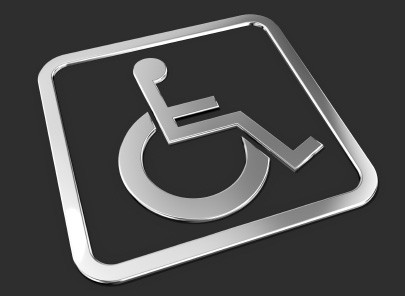6 key elements of a good disability insurance policy
If your paycheck stopped tomorrow — and you had no hope of receiving another for months or years — where would you get income?
Disability insurance provides one answer. This coverage can give you a steady payout for years or even decades after you become injured or ill and no longer can work.
The prospect of a sudden disability may sound far-fetched. But in fact, more than 1 in 4 of today’s 20 year-olds will experience a disability before retiring, according to the U.S. Social Security Administration.
“If you don’t have disability insurance, you are risking a lot,” says Lynne McChristian, Florida representative for the Insurance Information Institute (III).
Following are six key elements of a good disability insurance policy — and what you need to look out for.
6 key elements of a good disability insurance policy
1. Definition of disability.
Disability insurance may seem straightforward. But each company defines a “total disability” according to certain criteria, says Larry Hazzard, vice president of product and marketing strategy at the Guardian Life Insurance Company of America.
“It doesn’t always mean the same thing,” says Hazzard, who also is a board member of the Council for Disability Awareness.
For example, some policies pay out only if the disability prevents you from performing in your current career. Others pay if you can’t work at any job suitable to your education and experience, according to III.
Most policies also offer “residual disability” coverage. This pays out if your disability is not “total,” but it prevents you from performing some aspects of your job.
2. Benefit period.
Disability policies differ in how long they pay out after a disabling event. Standard time periods include two, five or 10 years, Hazzard says. Other policies pay out to a certain age, such as 65 or 67.
A few policies offer a lifetime benefit — meaning the insurance will pay out for as long as you live and remain disabled.
“However, these can be expensive,” Hazzard says.
Some people purchase a policy that pays until age 65, assuming Social Security disability automatically will take over after that. But that can be a mistake, McChristian says.
“There are limitations to what Social Security pays, and many (disability) applicants are disapproved,” she says.
In fact, 65 percent of Social Security disability claims were initially denied in 2012, according to the Council for Disability Awareness.
3. How much of your earnings will be replaced.
It is crucial to purchase enough coverage to meet your monthly financial obligations.
“The key is to evaluate all your sources of income to decide how much disability coverage you need,” McChristian says.
Typically, a disability policy will replace between 60 percent and 70 percent of your total taxable income. There are also policies that can cover higher amounts of take-home pay, but they are more costly.
Some people who become disabled have to leave a higher-income profession for a lower-paying job. Look for a disability policy that provides a payout that covers that gap so long as it exists, although the exact terms will vary from policy to policy, McChristian says.
4. Waiting period.
No matter which type of policy you buy, expect a waiting period before benefits kick in.
Technically known as the “elimination period,” this can be as little as 30 days or as much as 90 days or more. The shorter the waiting period, the higher your premium.
It often makes sense to purchase a policy with the longest elimination period you can reasonably take on. But remember, you will not receive any disability income during that time.
“If you choose a longer elimination period, you would have to dip into your personal finances for a longer time,” McChristian says.
Typically, your first check arrives about 30 days after your elimination period ends, according to III.
5. Accident and illness coverage.
About 90 percent of disabilities are the result of illnesses, according to the Council for Disability Awareness.
However, accidents — such as a bad car wreck or a serious fall from a high ladder — also put you at risk.
Most disability insurance policies cover disabilities associated with both accidents and illnesses, says John Nichols, a spokesman for the LIFE Foundation and a disability insurance expert.
But he adds that “there are a few insurance carriers that offer accident-only policies.”
Ask your agent about accident coverage in your policy, even if it costs more.
“Purchasing disability insurance is less about the price and more about the opportunity to protect one’s ability to earn an income,” Nichols says.
6. Cost-of-living increase in benefits.
A long-term disability deprives you of income. Unless you are careful, it also puts you at the mercy of inflation.
For example, if you bought $1 of disability coverage in 1992, its purchasing power would’ve been reduced to 61 cents by 2012.
You can avoid this fate by purchasing a policy that automatically adjusts your payment to reflect an increased cost of living.
McChristian says policies typically adjust so that your benefit increases annually between 3 percent and 6 percent.
“This is an important option to have, especially if you are buying coverage to age 65, or for lifetime protection,” she says.
